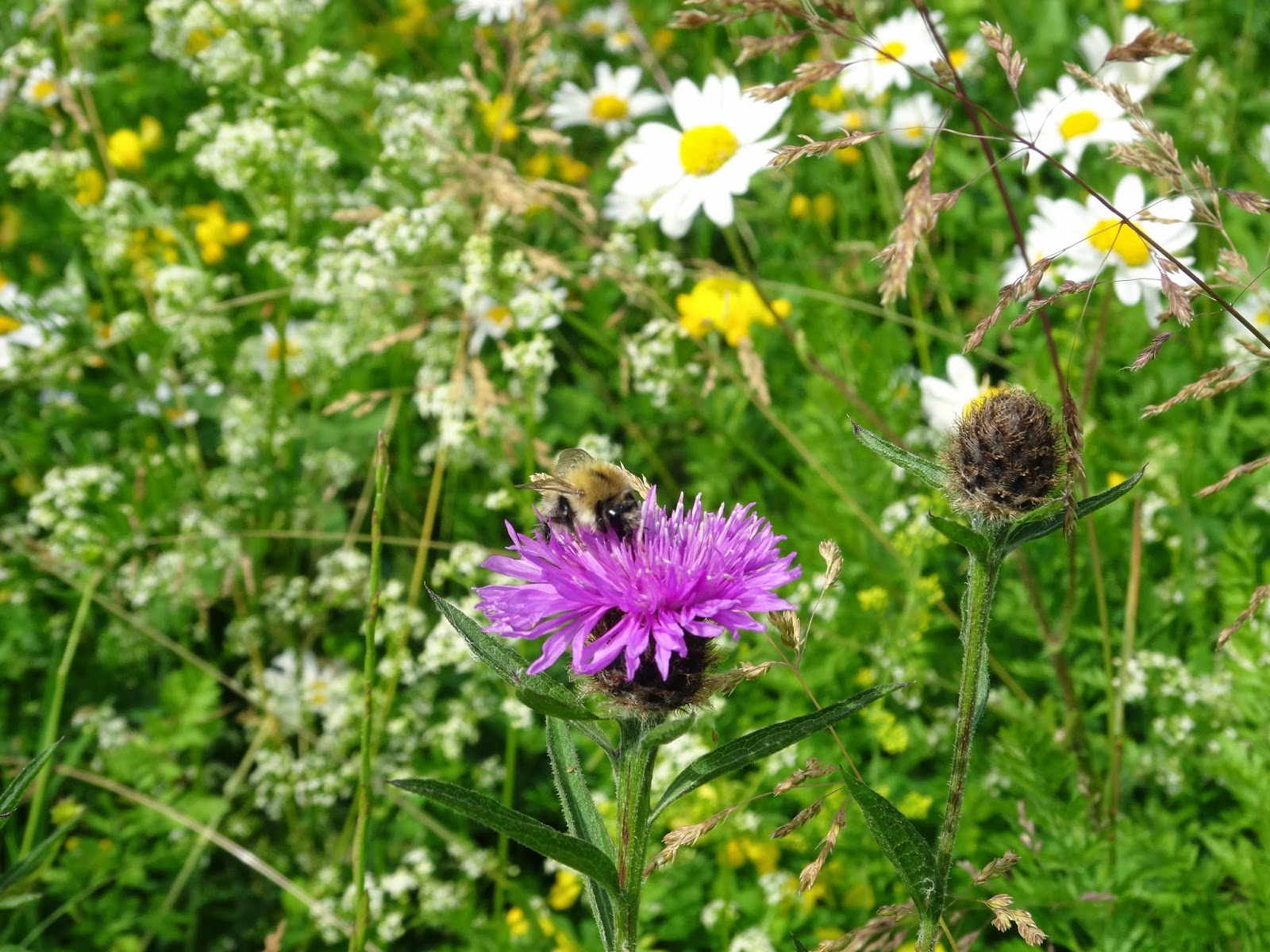Urban Jungle: Life on a University Campus
Bristol University is, like many other universities, a city
centre campus made up of numerous faculty buildings; tall concrete and glass
structures filling the skyline above the city.
Below the skyline these buildings are interspersed with tarmac roads,
paved walkways and brick walls. You
might think that it would be difficult to find a high diversity of wildlife living
amongst this, but look a little closer and you can find an amazing array of
species all exploiting the many small patches of habitat spread across the
campus, from a single bumblebee on a willowherb growing through a crack in a
wall, to a scurry of squirrels racing across the treetops with their mouths
stuffed full of hazelnuts.
Around the campus, many of the grassy areas are regularly mown but sections are also left
longer to provide habitat for insects.
 |
| 'Say no to the mow' |
 |
| The edges of this grassy area have deliberately been left longer for wildlife. |
Amongst the grass and wildflowers numerous invertebrates go about their daily business. The flies and bees foraging on the pollen and nectar from the wildflowers, the ladybirds preying upon the unsuspecting aphids while the Ichneumon wasps lurk in the foliage below waiting for a poor unsuspecting host to pass by.
 |
| Fly feeding on a Buttercup |
 |
| Fly resting on the buttercup leaves in the long grass |
 |
| Ladybird searching for aphids amongst the foliage |
 |
| Merodon equestris feeding on Cat's-ear (Hypochaeris sp.) |
 |
| Tree bumblebee (Bombus hypnorum) feeding on Common mallow (Malva sylvestris) |
Just off the main road, Royal Fort Gardens is a 0.1 hectare oasis nestled amongst
the faculty buildings. For most of the
day the gardens are calm and tranquil, and if you just sit quietly on one of
the many secluded benches you won’t have to wait for long before the wildlife
begins to make an appearance.
 |
| A Robin making short work of an earthworm |
 |
| The resident squirrels can often be seen and heard chasing each other across the treetops |
 |
| Bombus terrestris foraging on Catmint |
 |
| Eristalis sp. feeding on an Asteraceae flower |
 |
| Cuckoo spit from the Froghopper nymph hangs from the Lavender |
 |
| One of many Mullein moth caterpillars (Shargacucullia verbasci) feeding on Common Mullein (Verbascum thapsus) |
 |
| A bumblebee (Bombus terrestris or lucorum) foraging on a dandelion |
 |
'What's that coming over the hill ? I didn't notice the little fellow on the left creeping over the top of the Foxglove until the next morning!
|























































